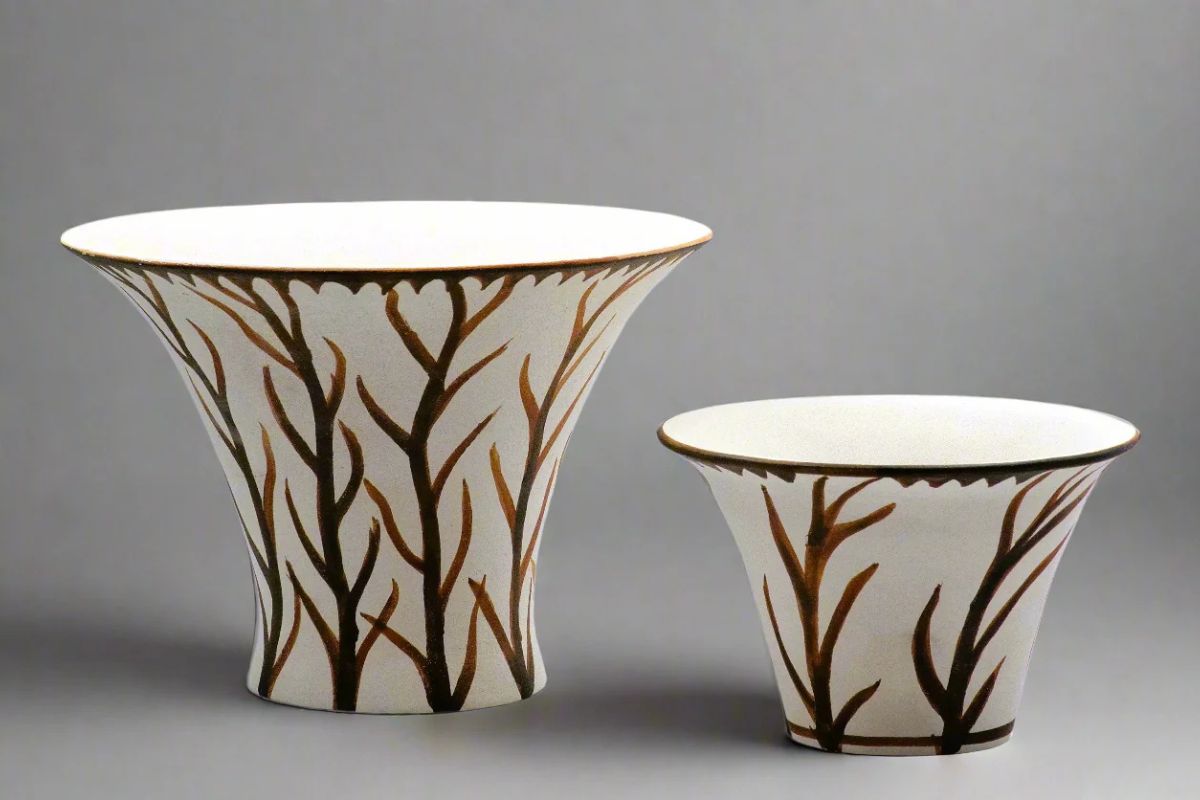
Key Highlights
- Explore the evolution of Greek pottery, encompassing its origins in ancient Greek culture and its remarkable influence on art history.
- Uncover major artistic periods, including the Geometric, Archaic, and Classical periods, and their role in shaping ancient Greek pottery design.
- Learn hallmark vase painting techniques such as black-figure and red-figure styles that depicted mythical figures and human forms on Greek pottery vases.
- Recognize the various types and functions of pottery vessels in daily life, trade, and rituals across ancient Greece.
- Learn about renowned ancient vase painters, potters, and their workshops that refined Greek ceramics craftsmanship.
- Discover the undying legacy of ancient Greek pottery in modern art, contemporary collections, and rediscovery efforts.
Greek pottery gives us a good look at ancient Greek culture and its creative skills. These pottery vessels are long-lasting because they are made from ceramic. This helps their art and ideas to stay with us. The pottery shows how good the Greek craftsmen were at their work. By looking at the different designs, any person can see human figures and learn about old myths. Greek pottery vases often reflect scenes from daily life, rituals, and important events of the time. Every piece of pottery also gives us a way to see what daily life, rituals, and events were like in that time. The world history encyclopedia counts Greek pottery as a key piece in history. These Greek vases show how art styles changed over the years. They help us understand more about one of the most important civilizations of antiquity. Greek pottery stands out as a record of how people lived, and what they valued, in their time.
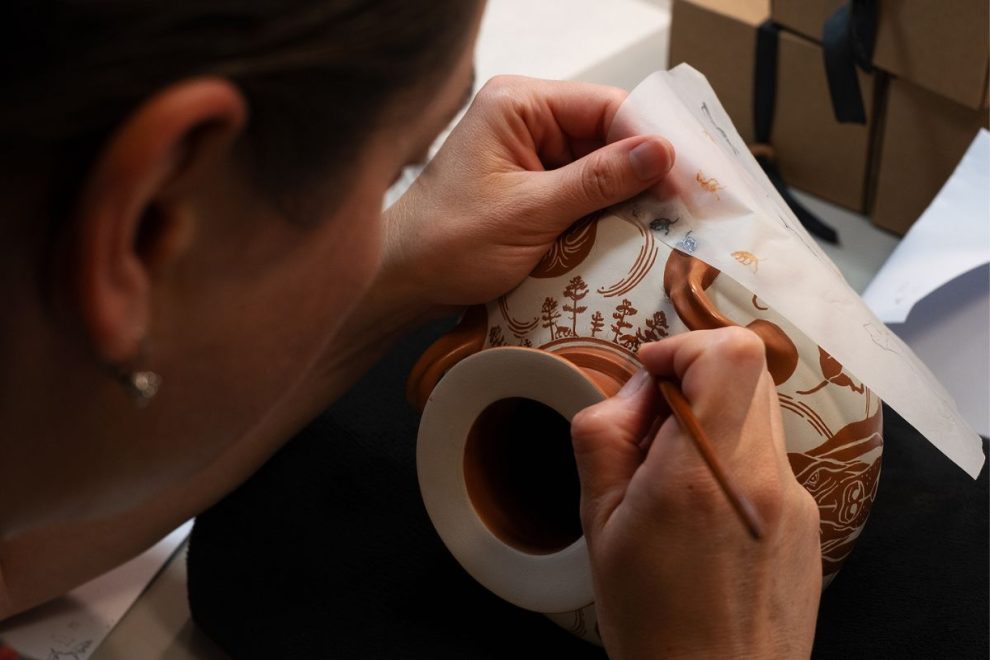
Origins of Greek Pottery Vases
Ancient Greek pottery comes from a long tradition of people working with clay. Over many years, the look of Greek pottery changed and became the famous styles we see from ancient Greek times. In the early days, artisans in Greece learned new ways from other cultures nearby. They mixed their own new ideas with things they got from others to make pottery vessels. These clay pottery vessels were not just for show. People used them every day for many things, like keeping things, trading with other places, and during different rituals. Pottery like this was seen all over the Mediterranean. This shows how important ancient Greek pottery was in people’s lives and how far the Greek trade networks went in those days of antiquity.
Early Techniques and Materials
The start of ancient Greek pottery came from using the natural clay found in the area. Artisans would use terracotta clay to make pottery vessels. They learned their ways from their families and made their skills better with time. The firing process was very important in Greek pottery. It made the pottery strong and also good to look at. When firing pottery, Greek artisans worked with kilns. They had to be careful about the heat. This step changed the simple clay into strong ceramics. Pottery vessels would then have their bright reddish-orange or black colors. The details in the pottery came from both cutting designs, called incisions, and using paint for decoration. There was more to clay pottery than just daily use. Potters in the ancient Greek world liked to try new ways to decorate. Over time, techniques like making incisions and painting designs in black started to change. This led to famous Greek pottery designs known as black-figure and red-figure decoration styles. Using both good clay and their hand skills, ancient Greek artisans made pottery that people now see as art with lasting value.
Influences from Neighboring Cultures
Greek pottery was the result of both local skill and ideas from outside places, mainly nearby areas like Crete and Corinth. Early Greek artists learned patterns and ways of making pottery from people in southern Italy and across Europe. Because of this, they could add new things to their work. Crete was well-known for its Minoan pottery and gave the Greeks bold geometric shapes and designs. These shapes soon became a part of early Greek pottery. In Corinth, people shared ideas on how to put animal and human figures on pottery. Pottery from southern Italy, primarily Etruscan styles, helped inspire Greeks with new shapes and pictures. As trade grew, people shared more than just goods. Potters from Greek and other civilizations met and shared colors, patterns, and tricks for making beautiful pottery. This wide network helped the ancient Greek artists create very different and interesting pots. That is why ancient Greek pottery from that time is known for its many types of shapes, detailed designs, and bright colors.
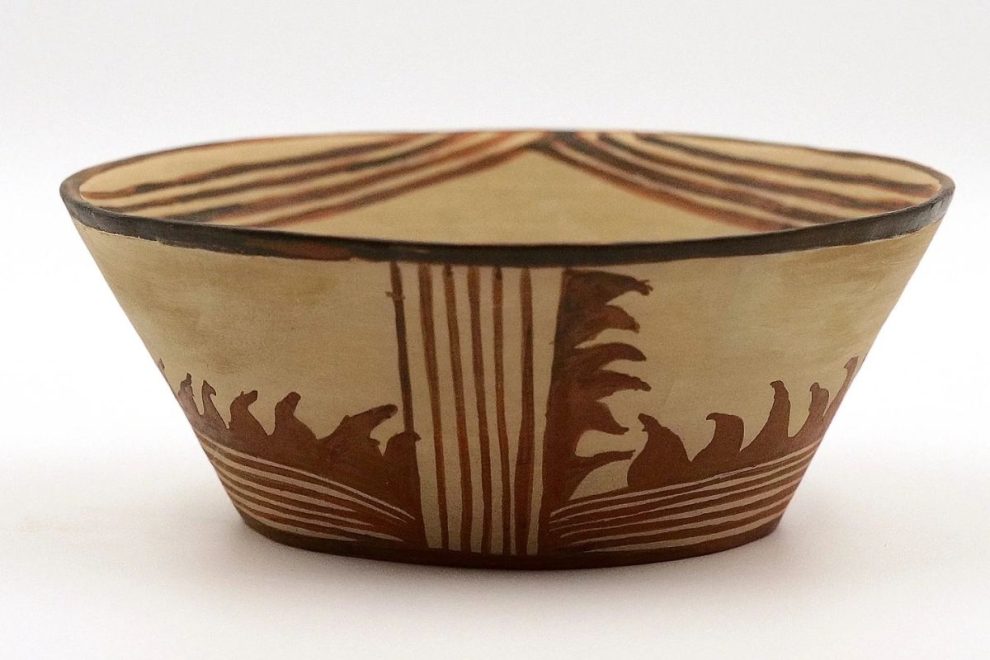
Major Periods in Greek Pottery
Ancient Greek pottery is sorted into clear artistic periods. Each one shows the changes in culture and history at the time. The main phases are called the Geometric, Archaic, and Classical periods. These cover a time from about 1000 to 300 BCE. In the Geometric period, pots mostly had shapes and lines instead of people or animals. The Archaic era came next and brought in human figures and more detailed patterns. Then, the Classical period came. This was the high point for Greek pottery, with the best skill and looks. All these phases help us see how ancient Greek pottery changed. Over the years, it grew from simple designs to a well-made art form. It shows how the people of Greek times put their spirit and skill into each piece.
Stone Age and Bronze Age Beginnings
The first pottery in ancient Greece started in the Stone Age and Bronze Age. Archaeologists have found simple pottery wares and small figurines that are thousands of years old. These early pieces show the basic beginnings of working with clay. Back then, pots were made mainly to hold food and liquids. People needed items that worked well for daily life and for trading. Most of these wares had plain patterns. Over time, the patterns started to change and became more detailed. During the Bronze Age, people learned new ways to make pottery. It was not only used for daily tasks. Makers started to create figurines and decorated pots for events or social gatherings. The growth in skill set the stage for the later Geometric period, and other periods in Greece. Pottery now was part of their art and culture and not just for everyday use.
Iron Age
The Iron Age brought big changes to Greek pottery in ancient Greece. This important shift happened during the Greek dark ages. At this time, pottery began to show strong geometric patterns. These patterns became a key part of every Greek pottery design. Pottery makers used many geometric shapes like lines, zigzags, and spirals on their pots. Toward the end of this period, some vessels were made to look like people or had human figures on them. This showed that Greek art was starting to change. It was a hint at how Greek art in Greece would become different in later years. Even though people faced tough times during the Greek dark ages, this period changed how people made pottery. The geometric designs made in the Iron Age gave way for new styles in later periods, like the Protogeometric and Geometric times. Because of this, people in ancient Greece kept creating new styles and ideas in pottery and Greek art.
Protogeometric and Geometric Periods
The Protogeometric and Geometric periods were big changes in ancient Greek pottery. In the Protogeometric phase, there were new ideas for decoration. Artists started to use banding and concentric circles. This made the pottery look more stylish. During the Geometric period, these styles became even more clear. Makers added more fine details to pottery through careful incisions in the clay. Pottery vessels from this time, such as amphorae and kylixes, showed abstract forms with repeating patterns. These patterns focused on order and symmetry. Artists during these years wanted to make pieces that were useful and good-looking. They looked for visual balance in their Greek pottery. Some pottery vessels, like the Geometric oinochoe, blended solid shape with creative decoration. The new ideas from these times gave a strong path for later changes in ancient Greek pottery. This moved directly into the Archaic and Classical phases. In these later years, people started to focus more on showing figures in their pottery and Greek art.
Orientalizing Period
The Orientalizing Period in ancient Greek pottery brought together different styles in a new way. People during this time got ideas from Eastern cultures, like Egypt and the Near East. This led to a new style in Greek pottery that included more detail and human figures. You could see complex patterns, animal shapes, and flowers. This was different from the older, more geometric styles in ancient Greek pottery. The change in style became important for Greek vase painting and helped shape the look of ancient Greek art. Because of this, Greek vase and pottery work became richer and more interesting. This period set the ground for bigger things to come in Greek art and vase painting.
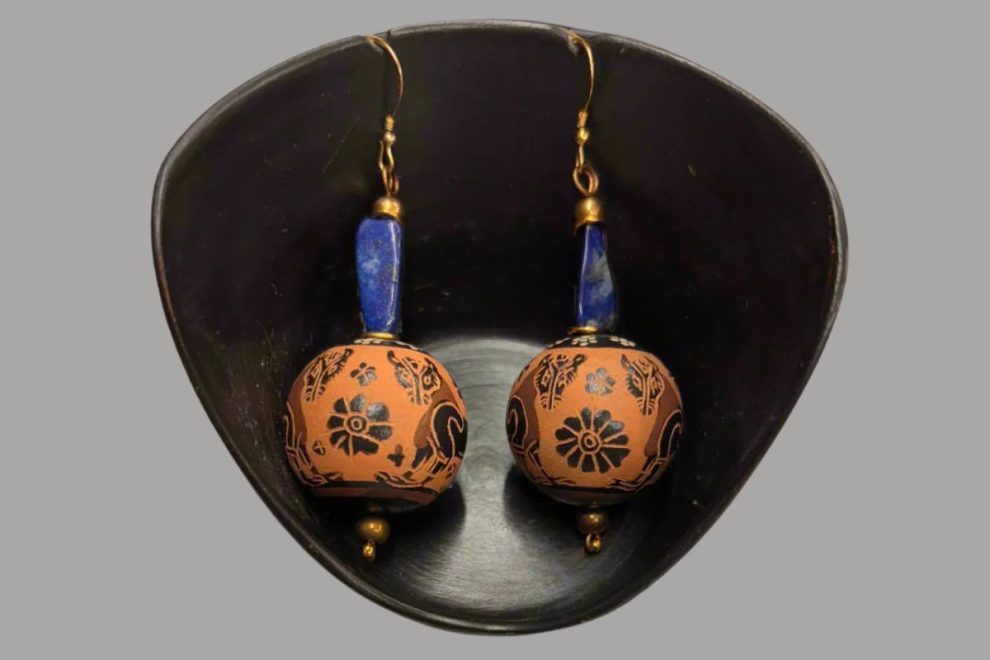
Styles of Vase Painting
Vase painting in ancient Greece shows many well-known styles. These styles give us a look into the culture and art of that time. One-way artists did this was by using the black-figure technique. In this style, fine details stand out in black against a reddish vase. Later, the red-figure technique came along. This method flipped things around. It showed human figures with more fine details, making the scenes better to look at. After these, there was the white-ground technique. This let artists use a light background on the vase for decoration. With this method, the decoration included bright colors and more fine details. People could see scenes from daily life and old stories from Greece. Vase painting in ancient Greece gave us a lot to know about how they lived and what they cared about most.
Black-Figure Technique
This style of Greek pottery started in the 7th century BCE. It let artists show human figures and scenes from myths on a shiny black surface. Athenian artists were the ones who used this new firing process. They put black paint very carefully on the terracotta pottery. Many pieces showed fine details carved into the black paint, showing people and stories from ancient Greek life. The black-figure way of making pottery became well-known in both archaic and classical Greek times. It is remembered now as a key style in the art and culture of the ancient world.
Red-Figure Technique
The red-figure technique changed the way people made ancient Greek pottery in the late 6th century BCE. Unlike the black-figure style that came before, artists would paint human figures in a natural red color and put them on a black background. This idea helped Athenian artists show human figures and scenes with more fine details and more life. The Greek pottery they made showed off bold colors and new movement. This style became a main part of ancient Greek art. These vases are known even now for their good details and the way they let Athenian artists shine in the world of Greek art.
White-Ground Technique
The white-ground technique became a way to do Greek vase painting in the late 5th century BCE. It stands out because the vases have a bright, light background. Artisans would use a kaolin slip to make this surface. This gave them a good base to add detailed and colorful drawings of human figures and scenes from ancient Greek mythology. This style of ancient Greek art was different from older methods. With the white-ground technique, artists could show more fine details and use more bright colors. This made the pottery look even better and helped tell stories on the vases in a great way. It was a style that got the attention of collectors and people who loved art. The impact of the white-ground technique can still be seen in the history of ancient Greek art.
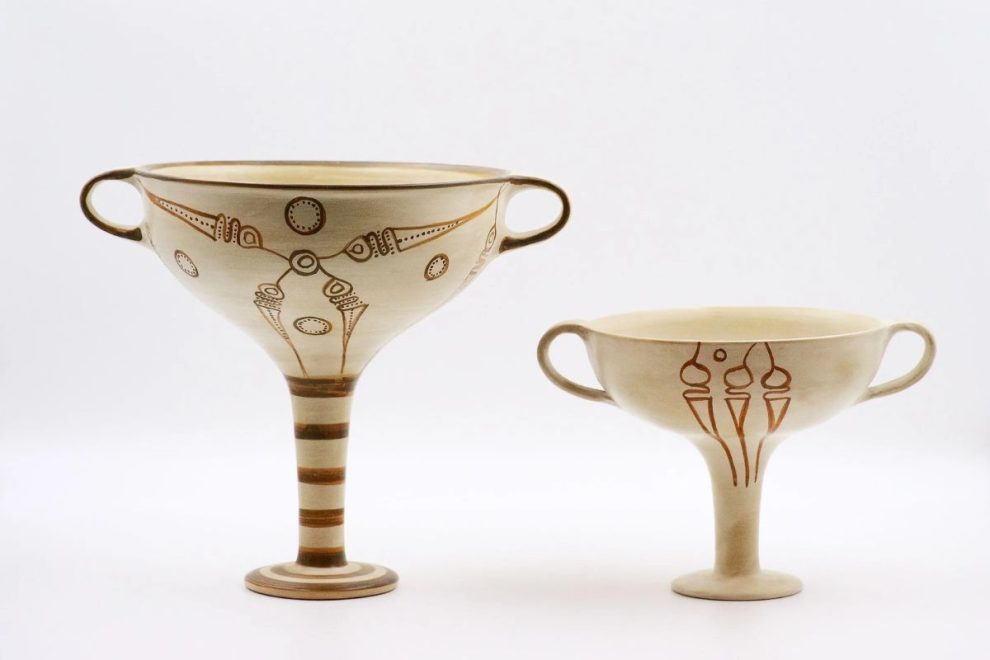
Shapes and Functions of Greek Vases
Pottery vessels in ancient Greek times came in many shapes, each with its own use. Some, like amphorae, were made to store and move things. People often put olive oil and wine in them. Kraters had big openings. This made them good for mixing water and wine, which people did a lot during group events called symposiums. The kylix was used as a cup to drink from, and it was often seen at parties. These types of ancient Greek pottery show more than just good skill and art. They also tell us about the daily life, social customs, and ideas of ancient Greek people. Greek pottery was a big part of both work and fun times, making it key for learning about their world.
Common Vase Types (Amphorae, Kraters, Kylixes)
Amphorae, kraters, and kylixes are some of the main vase types in Greek pottery. Each one had its own job in ancient Greek life and events. Amphorae have long necks and wide bodies. People used them for storing and moving wine or olive oil. Kraters have wide openings at the top. People used them to mix wine and water at many get-togethers. Kylixes are shallow cups. These cups, which had nice designs, were used for drinking and raising a toast. They also show the fine skill of ancient Greece in making pottery. These vases from ancient Greek pottery tell us a lot about how people in Greece lived.
Uses in Daily Life and Rituals
Pottery vessels had a big role in the lives of ancient Greeks. People used them every day to keep things like oils and perfumes. The vessels were important in rituals and celebrations too, not just for daily use. Greek pottery often had detailed designs, and these showed the skill in vase painting. These designs also made the pottery look good. When people came together, they used cups called kylixes to share wine. This made the time feel amazing for everyone. The way Greek pottery mixed being useful and being artistic was important. It was a big part of how the Greeks lived and gathered. Pottery, with its art, designs, and use, stayed at the heart of their culture.
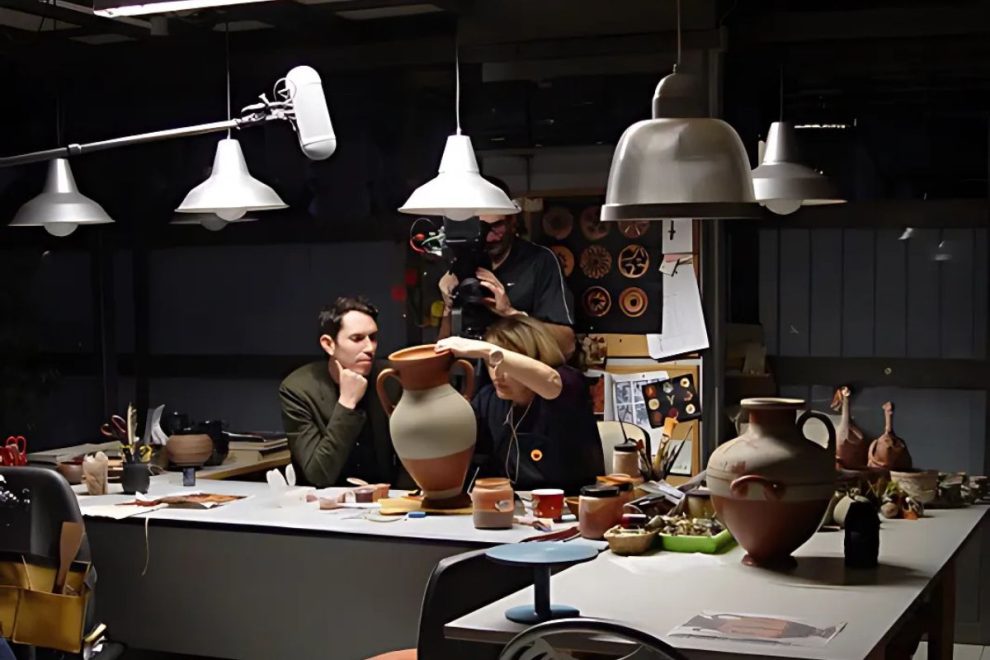
Artists, Workshops, and Inscriptions
The lively world of ancient Greek pottery shows the great skill of vase painters and potters. Many Athenian artists did well in the 6th century BCE. These artists often worked in different workshops in Athens that focused on styles, like black-figure and red-figure methods. These craftsmen used well-made kilns for firing to finish their pottery vessels. They made pottery that was decorated with very fine designs and clear inscriptions. Their close eye for detail and new ways helped make Greek art better. This strong tradition in Greek and ancient Greek pottery still stands out in the history of ceramics.
Famous Greek Vase Painters and Potters
Throughout the history of ancient Greek pottery, some artists became very well known for their great work. Artists like Exekias and Euphronios stood out as leaders in Greek art. They used black-figure and red-figure styles that showed their strong skill at drawing human figures and stories about gods. You can see their careful work and styles in each Greek vase they made. These methods helped shape vase painting in both the Archaic and Classical times. Today, the work from these master potters continues to give ideas to people who make and enjoy Greek art. Their impact on pottery and ancient Greek culture is still felt, and many people look to their Greek vases for inspiration.
Workshop Organization and Craftsmanship
The way workshops were set up was important for Greek pottery in the ancient Greek world. Each person had a set job. Some worked with clay, while others handled firing. This helped everything go smoothly and made sure the ancient Greek pottery was of good quality. Inside these places, teamwork was a big part of their success. It helped with the careful decoration and fine details we see in Greek vase painting today. Athenian artists worked side by side with others who made the pottery. They often shared new ways to do things and got ideas from each other. Because of their hard work and the way they worked together, people still admire Greek vase painting and ancient Greek pottery. Their skill and care made Greek vases with beautiful decoration, turning them into something loved all over the world. This famous pottery is still known for its fine details and great art.
How were Greek Pottery Vases Decorated?
Greek pottery vases had many detailed designs. Artists used different ways to decorate them, including black-figure, red-figure, and white-ground painting. They painted with fine brushes to show scenes of mythology, everyday life, and rituals. Often, the artists added inscriptions on the pottery to help tell the story. This made Greek pottery not just useful, but also fun to look at and learn from.
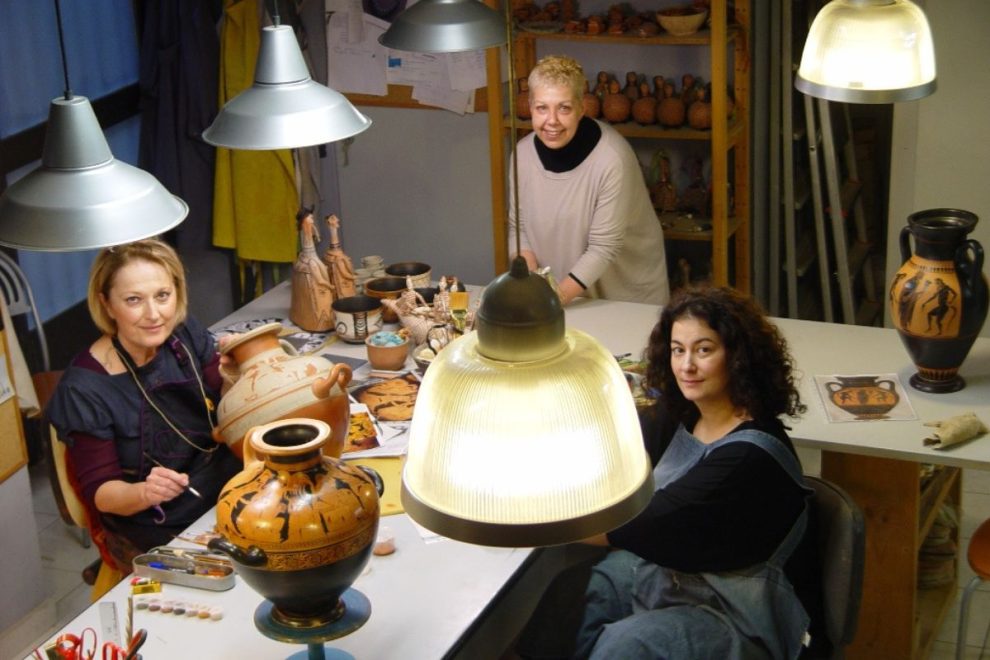
Influence and Legacy of Greek Pottery
The skill and style seen in Greek pottery have had a big impact on art that came after it. Many artisans through the years have looked to ancient Greek pottery for ideas. The black-figure and red-figure ways to decorate pottery, which first came from the ancient Greek artists, became a main guide for people making pottery all over Europe. When people found these works again during the Renaissance, they started to enjoy the beauty of ancient Greek art even more. This led to a new interest in making ceramic art that looked like this older style. There are now many museums around the world that show collections of Greek pottery. These pieces help everyone see the decoration and skill used by ancient artists. The story of ancient Greek pottery is not just about the past. People today can still see how its style and decoration matter in modern art.
Impact on Later Art and Pottery
The impact of Greek pottery reaches far into later art styles in Europe and even farther. Methods that came from the ancient Greek, like vase painting and careful firing, set a strong base for those who came after. Artists in the Renaissance and ceramic makers looked to the older Greek ways for ideas. The look and feel of ancient Greek pottery, from simple shapes to detailed human figures and stories shown on pottery vessels, show up in many types of art. These things were so important in Greek pottery that they tell us a lot about world history. The Greek skills and their eye for beauty can still be seen now in modern art. This link to the past keeps ancient Greek pottery and its style a big part of what artists do today.
Rediscovery and Collection in Modern Times
The interest in ancient Greek pottery started again during the Renaissance. At this time, many collectors and scholars wanted to learn more about these clay vessels. Museums in Europe and the Americas began to show Greek pottery to the public. This helped people see the great art and history behind each piece. Today, people still look for real pieces of ancient Greek pottery to add to their collections. There are also many pottery replicas on the market, which makes finding real ones harder. If you want to get into Greek pottery, you need to know about different styles like black-figure and red-figure pottery. Learning about these styles be a good way to enjoy ancient Greek art in our world today.
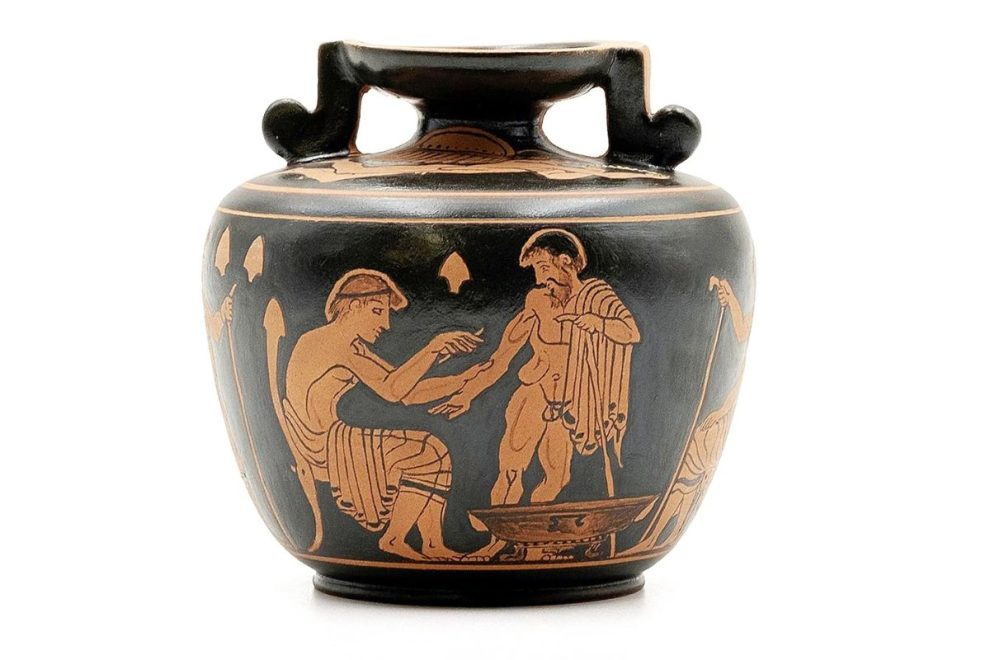
Where can I see Ancient Greek Vases Today?
You can find ancient Greek vases in many museums around the world. The British Museum and the Louvre both have some of these pottery pieces. There are also a lot of archaeological sites in Greece where you can see Greek pottery up close. If you go to art galleries that focus on ancient Greek art, you might get the chance to see real Greek pottery from Greece too.
How to Identify Authentic Greek Pottery Vases vs. Replicas
Telling the difference between real Greek pottery vases and copies takes a close look and some knowledge about old methods. Real Greek pottery usually has small changes in color and little flaws from the firing process. These show the skill and work of the old potters who made them. You can look for things from age, like a patina or signs that the pottery has been used over time. This is a good way to know it is real. Sometimes, you might see inscriptions or marks that help you know where the piece is from. If you know about the styles that came from places like Athens or Corinth, it will also make it easier to see what is real pottery and what is just a modern copy.
Collecting, Purchasing, and Modern Market for Greek Vases
To get into the market for Greek pottery, you need to have a good eye and know a lot about where these pieces come from. People who collect ancient Greek art often look for real items from trusted sellers. They care about the history and skill that make ancient Greek pottery stand out from other art. The price of these pottery vessels is based on things like their shape, how old they are, if they are rare, and if they are still in good shape. Pieces that look almost new get a lot of interest from buyers. Now, with online sites and auctions, more people all over the world can see and buy Greek art. This helps keep the story of ancient Greek pottery alive in new ways, mixing old collecting habits with new digital tools.
The lasting impact of Greek pottery vases shows much about ancient Greece. These pieces let us see the customs, art, and daily life from that time. The details in vase painting and the many different vase shapes were not just made for use. They also share stories, often showing human figures in moments that matter. People today still care deeply about pottery from Greece. Modern collectors and fans try hard to keep this history alive. The love for Greek pottery keeps growing. It connects the past to how people make art today.
